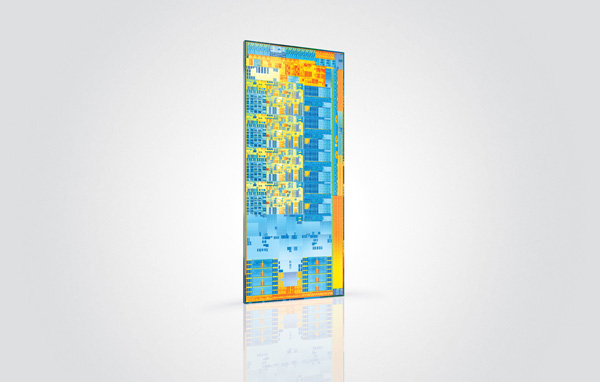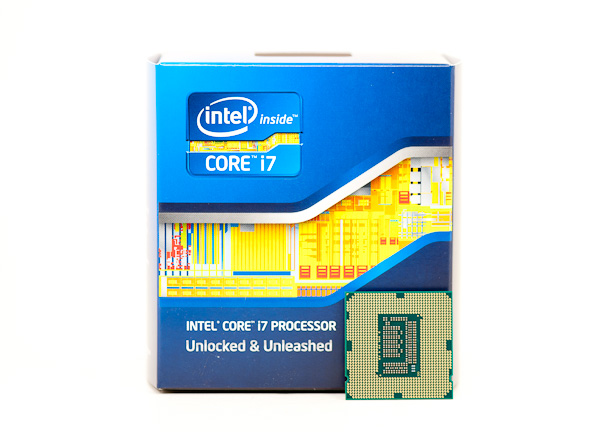The Intel Ivy Bridge (Core i7 3770K) Review
by Anand Lal Shimpi & Ryan Smith on April 23, 2012 12:03 PM EST- Posted in
- CPUs
- Intel
- Ivy Bridge
Final Words
Reviewing a tick in Intel's cadence is always difficult. After Conroe if we didn't see a 40% jump in a generation we were disappointed. And honestly, after Sandy Bridge I felt it would be quite similar. Luckily for Intel, Ivy Bridge is quite possibly the strongest tick it has ever put forth.
Ivy Bridge is unique in that it gives us the mild CPU bump but combines it with a very significant increase in GPU performance. The latter may not matter to many desktop users, but in the mobile space it's quite significant. Ultimately that's what gives Ivy Bridge it's appeal. If you're already on Intel's latest and greatest, you won't appreciate Ivy as an upgrade but you may appreciate for the role it plays in the industry—as the first 22nm CPU from Intel and as a bridge to Haswell. If you missed last year's upgrade, it'll be Ivy's performance and lower TDP that will win you over instead.
Intel has done its best to make this tick more interesting than most. Ivy Bridge is being used as the introduction vehicle to Intel's 22nm process. In turn you get a cooler running CPU than Sandy Bridge (on the order of 20—30W under load), but you do give up a couple hundred MHz on the overclocking side. While I had no issues getting my 3770K up to 4.6GHz on the stock cooler, Sandy Bridge will likely be the better overclocker for most.
With Ivy Bridge and its 7-series chipset we finally get USB 3.0 support. In another month or so we'll also get Thunderbolt support (although you'll have to hold off on buying a 7-series motherboard until then if you want it). This platform is turning out to be everything Sandy Bridge should have been.
Ivy's GPU performance is, once again, a step in the right direction. While Sandy Bridge could play modern games at the absolute lowest quality settings, at low resolutions, Ivy lets us play at medium quality settings in most games. You're still going to be limited to 1366 x 768 in many situations, but things will look significantly better.
The sub-$80 GPU market continues to be in danger as we're finally able to get not-horrible graphics with nearly every Intel CPU sold. Intel still has a long way to go however. The GPUs we're comparing to are lackluster at best. While it's admirable that Intel has pulled itself out of the graphics rut that it was stuck in for the past decade, more progress is needed. Ivy's die size alone tells us that Intel could have given us more this generation, and I'm disappointed that we didn't get it. At some point Intel is going to have to be more aggressive with spending silicon real estate if it really wants to be taken seriously as a GPU company.
Similarly disappointing for everyone who isn't Intel, it's been more than a year after Sandy Bridge's launch and none of the GPU vendors have been able to put forth a better solution than Quick Sync. If you're constantly transcoding movies to get them onto your smartphone or tablet, you need Ivy Bridge. In less than 7 minutes, and with no impact to CPU usage, I was able to transcode a complete 130 minute 1080p video to an iPad friendly format—that's over 15x real time.
While it's not enough to tempt existing Sandy Bridge owners, if you missed the upgrade last year then Ivy Bridge is solid ground to walk on. It's still the best performing client x86 architecture on the planet and a little to a lot better than its predecessor depending on how much you use the on-die GPU.
Additional Reading
Intel's Ivy Bridge Architecture Exposed
Mobile Ivy Bridge Review
Undervolting & Overclocking on Ivy Bridge
Intel's Ivy Bridge: An HTPC Perspective












173 Comments
View All Comments
DanNeely - Monday, April 23, 2012 - link
Isn't the net OC performance roughly a wash? You're losing ~10% off the top in clock speed, but getting it back by the CPU doing ~10% more per clock.I'm curious what the power gap for the OCed IB is vs SB. For a system kept running at full load, the stock power gap would give a decent amount of yearly savings on the utility bills. If the gap opens even more under OC it'd be a decent upgrade for anyone running CPU farms.
Shadow_k - Monday, April 23, 2012 - link
Very nice igp improvementsAn also when will anandtech do a review on the i5 3570k because igp is underclocked
Ram21 - Monday, April 23, 2012 - link
UltraoboksRam21 - Monday, April 23, 2012 - link
Page 11 has the incorrect title or chart of Starcraft II - GPU Bench on the Dirt 3 pageAnand Lal Shimpi - Monday, April 23, 2012 - link
Fixed both of these, thank you!ltcommanderdata - Monday, April 23, 2012 - link
I don't have a comment on this Ivy Bridge review itself since it's thorough as always from Anandtech and Ivy Bridge seems pretty much what was expected. I do want to suggest a new benchmark for the eventual OpenCL followup when Intel releases new GPU drivers. As AMD mentioned as part of heir HD7000 series launches, WinZip 16.5 has finally been released with OpenCL acceleration in collaboration with AMD. Since fluid simulations won't be a common use case for most consumers and video encoding seems better suited to fixed function hardware like QuickSync, this OpenCL accelerated file compression/decompression will probably be the first and most popular use of GPGPU by consumers. It'll be interesting to see how much of a benefit GPU acceleration brings and whether AMD's collaboration results in better performance from AMD GPUs compared to Intel and nVidia GPUs then raw hardware specs would suggest. Other interesting tests would be to see if the acceleration is more pronounced with 1x1GB compressed file versus many compressed files adding up to 1GB. How well acceleration scales with between different GPU performance classes and whether it'll be bottlenecked by PCIe bandwidth, CPU setup time, system memory transfers or more likely HDD I/O. Whether tightly coupled CPU/GPUs like Llano and Ivy Bridge gives a performance advantage compared to otherwise similar specced discrete GPUs. Whether GPU acceleration is worthwhile on older GPU generations like the AMD HD5000/6000 and nVidia 8000/9000/100/200 series which aren't as compute optimized as the latest AMD HD7000 and nVidia 400/500 series. Whether WinZip 16.5 supports the HD4000 series which is OpenCL 1.0 or whether it requires OpenCL 1.1. Does WinZip 16.5 use OpenCL to help improve performance scaling on high core count CPUs (such as 8 or more cores).If GPU accelerated file compression/decompression is effective hopefully Microsoft and Apple will consider adding it to their native OS .zip handler.
Ryan Smith - Monday, April 23, 2012 - link
Rest assured it's on our list of things to look at, though I haven't seen it yet.mgoldshteyn - Monday, April 23, 2012 - link
The graphics engine still cannot support 10-bit per color IPS displays, as can be found on quality modern laptops from Dell and HP. That means that one is forced to get an overpriced mobile video card from ATI or NVidia to compensate, lowering the laptops power on hours by requiring an external card to be used with these displays. On non-IPS displays, one can choose to use the Intel built in graphics engine to save battery life. No such choice on high quality IPS displays since they are incompatible with the graphics engine of even Ivy Bridge.zaccun - Monday, April 23, 2012 - link
The workstation class laptops you are referring to are only offered with discrete graphics cards. No other machine has a 10 bit IPS panel. There is zero sense in dell or HP offering a machine aimed at professionals doing 3d modeling/CAD/video editing/etc without also putting the graphics horsepower in the laptop to support it.While I personally would love the option of getting a machine with the awesome panels that those notebooks use, without also paying for the $$$$ quadro cards that pros need, neither Dell nor HP offer anything like that.
Arnulf - Tuesday, April 24, 2012 - link
Neither can you eyes distinguish 1 073 741 824 different colors so why would you care ?